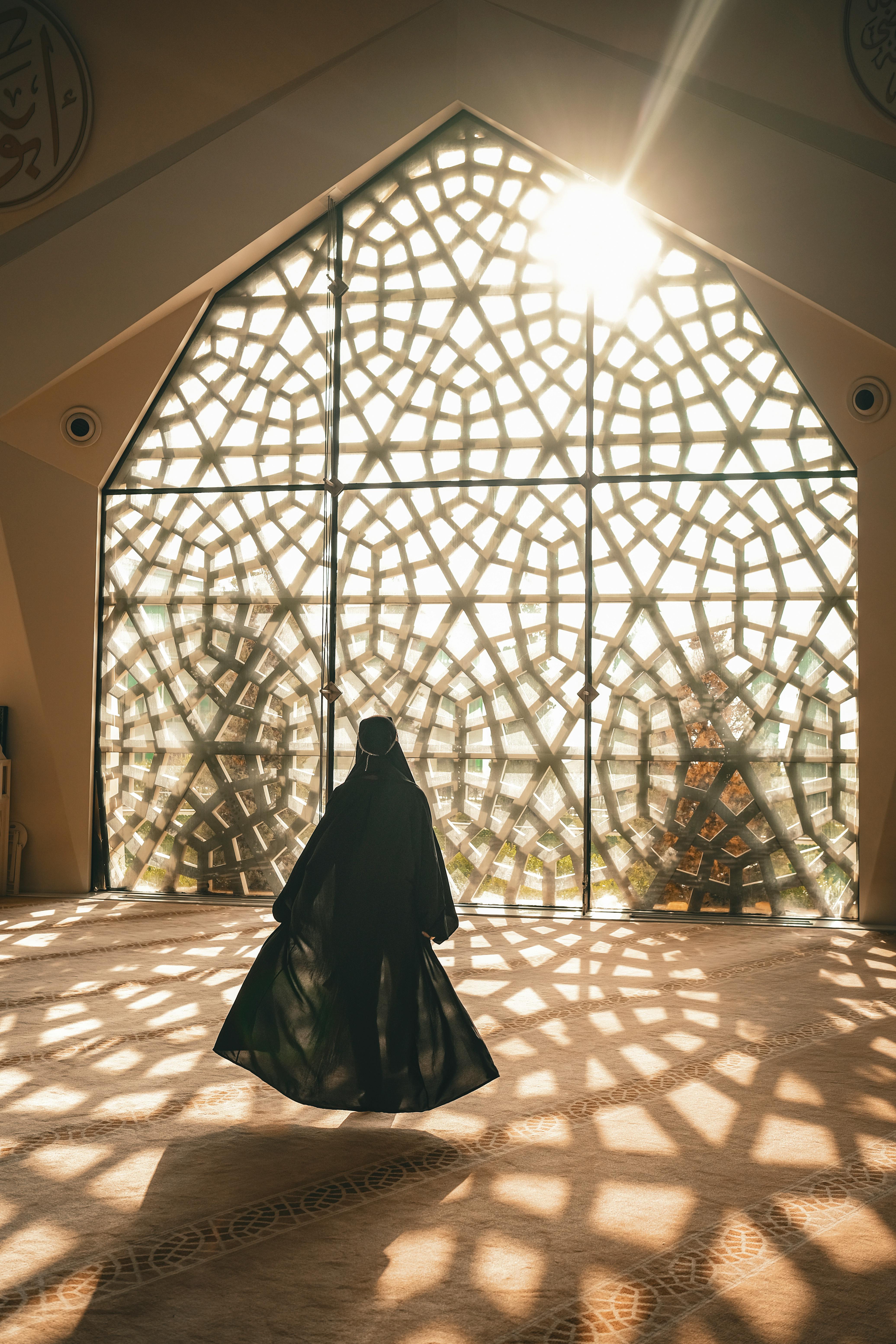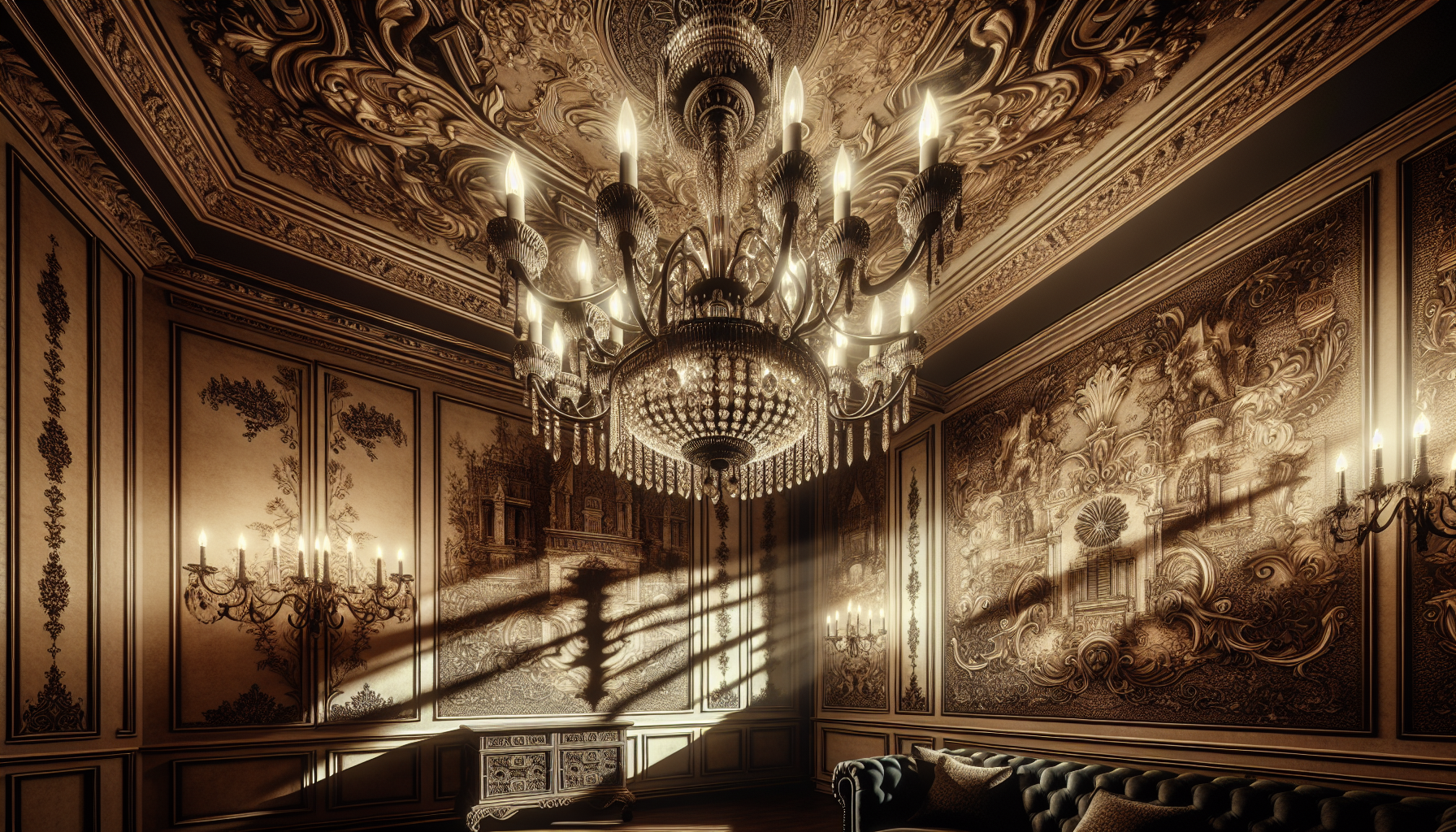Step into the enchanting world of interior design with a twist of Gothic splendor. At Coverswallcoverings.com, we are thrilled to present to you a captivating exploration of Wallpaper and Gothic Revival Inspirations. With an array of informative and educational content, we invite you to embark on a journey that will immerse you in the fascinating realm of wallcoverings. Discover the intricacies of design, explore the versatility of materials, learn expert installation techniques, and acquire valuable maintenance tips. Prepare to be inspired as we delve into the mystique of Gothic Revival, where rich textures, ornate patterns, and dark hues meet to create a truly remarkable aesthetic. Whether you’re a seasoned interior designer or simply a lover of all things beautiful, this article is sure to pique your interest and ignite your creativity. So, join us as we unlock the secrets of Wallpaper and Gothic Revival Inspirations.

The History of Wallpaper
Ancient Origins of Wallpaper
Wallpaper has a rich and vibrant history that dates back centuries. The use of decorative coverings for walls can be traced as far back as ancient Egypt and China. In Egypt, papyrus was used to create colorful and intricate designs that adorned the walls of temples and tombs. Meanwhile, in China, early forms of wallpaper were created using silk and rice paper. These early wallpapers were often hand-painted with delicate designs and motifs.
The Rise of Wallpaper in Europe
It was during the Renaissance period in Europe that wallpaper started to gain popularity. The use of wallpaper as a decorative element in homes became a status symbol among the wealthy and elite. In the 16th century, wallpapers were hand-painted on large sheets of paper and then applied to the walls. These wallpapers were often adorned with elaborate patterns and scenes inspired by nature, mythology, and historical events.
During the 18th century, the production of wallpaper became more industrialized, making it more accessible to the middle class. Wallpaper designs became more intricate and varied, with the introduction of block printing and later, machine printing techniques. The Victorian era saw a surge in the popularity of wallpaper, with rich and ornate designs becoming the norm. These wallpapers often featured motifs inspired by Gothic architecture and the natural world.
The Evolution of Wallpaper Designs
In the 20th century, wallpaper designs underwent significant changes influenced by various art movements and design trends. Art Nouveau brought about highly stylized and organic designs, while Art Deco introduced sleek lines and geometric patterns. Wallpaper became more experimental and daring, with bold colors and abstract designs taking center stage.
Today, wallpaper designs continue to evolve, with a wide range of styles available to suit every taste. From traditional patterns to modern and minimalist designs, there is a wallpaper to enhance any interior space.
Gothic Revival Architecture
Origins of Gothic Revival
Gothic Revival architecture emerged in the late 18th century as a reaction against the neoclassical styles that dominated the era. The movement sought to revive the architectural elements and aesthetics of the medieval Gothic period. It was heavily influenced by the romanticism and nostalgia for the past that characterized the time.
Characteristics of Gothic Revival Architecture
Gothic Revival architecture is characterized by its pointed arches, ribbed vaults, and slender columns. It often features intricate tracery, gargoyles, and other decorative elements inspired by Gothic cathedrals. The style emphasizes verticality and a sense of grandeur, often incorporating spires, steeples, and elaborate ornamentation.
Famous Examples of Gothic Revival Buildings
Some of the most iconic examples of Gothic Revival architecture can be found around the world. The Palace of Westminster in London, with its elaborate detailing and iconic clock tower known as Big Ben, is a prime example of the style. The Notre-Dame Cathedral in Paris and the Cologne Cathedral in Germany are also renowned for their breathtaking Gothic Revival design.

The Influence of Gothic Revival on Wallpaper
Gothic Revival Motifs in Wallpaper Designs
The Gothic Revival movement not only influenced architectural design but also had a significant impact on wallpaper patterns. Wallpaper designers drew inspiration from Gothic architecture, incorporating motifs such as pointed arches, quatrefoils, and trefoils into their designs. These motifs added a sense of grandeur and historical charm to interior spaces.
Incorporating Gothic Revival Wallpaper in Modern Interiors
While Gothic Revival wallpaper may be associated with traditional or historical spaces, it can also be incorporated into modern interiors to create a unique and captivating look. By combining Gothic Revival wallpaper with contemporary furniture and accessories, you can add a touch of elegance and drama to any room. The juxtaposition of old and new creates an interesting visual contrast that can make a bold statement in your home.
Popular Gothic Revival Wallpaper Styles
Pugin’s Gothic Revival Wallpaper Designs
Augustus Pugin, a prominent figure in the Gothic Revival movement, is known for his influential wallpaper designs. Pugin’s wallpapers often featured intricate Gothic motifs, including elaborate tracery and stylized foliage. His designs brought the beauty of Gothic Revival architecture into the realm of interior design, allowing homeowners to create spaces inspired by the grandeur of medieval cathedrals.
Flock Wallpaper in Gothic Revival Style
Flock wallpaper became popular during the Victorian era and was a favored choice for Gothic Revival interiors. Flock wallpaper is created by applying a patterned adhesive to the wall and then dusting it with fine fibers, usually made from wool or cotton. This creates a luxurious, textured finish that adds depth and visual interest to the walls. Flock wallpaper in Gothic Revival style often featured ornate patterns and rich, dark colors, creating a sense of opulence and drama.
Trompe-l’oeil Gothic Revival Wallpaper
Trompe-l’oeil, French for “deceive the eye,” is a technique used in wallpaper design to create the illusion of three-dimensional objects or architectural features. Trompe-l’oeil Gothic Revival wallpaper often featured realistic depictions of Gothic arches, columns, and windows, giving the impression that the room is part of a grand cathedral. This style of wallpaper adds a touch of whimsy and playfulness to any space, while still maintaining a sense of historical charm.

Gothic Revival Wallpaper Colors
Dark and Moody Color Palettes
Gothic Revival wallpaper is often characterized by its use of dark and moody color palettes. Deep shades of burgundy, navy blue, forest green, and rich browns create a sense of drama and opulence. These colors evoke the Gothic aesthetic, with its emphasis on mystery, darkness, and the sublime. When paired with ornate patterns and intricate motifs, these dark colors can transform a room into a historic and enchanting space.
Incorporating Metallic Accents
To add a touch of glamour and sophistication to Gothic Revival wallpaper, metallic accents are often incorporated into the design. Gold, silver, and copper tones can be used to highlight intricate details and bring a sense of luxury to the walls. Whether applied to the wallpaper itself or introduced through accessories and furnishings, metallic accents add depth and visual interest to the overall design.
Contrasting Colors for Dramatic Effect
For a bold and dramatic effect, contrasting colors can be used in Gothic Revival wallpaper. Pairing deep, jewel-toned colors with lighter shades creates a striking visual contrast and adds depth to the design. For example, deep crimson paired with a pale ivory or emerald green contrasted with a soft cream can create a captivating and visually dynamic space. The contrast between light and dark creates a sense of drama and intrigue, perfect for Gothic Revival-inspired interiors.
Choosing the Right Gothic Revival Wallpaper
Consider the Room’s Function and Size
When choosing Gothic Revival wallpaper, it’s essential to consider the function and size of the room. For smaller spaces, lighter wallpaper designs with intricate patterns can make the room feel larger and more open. In larger rooms, bolder patterns and darker colors can create a more intimate and cozy atmosphere. Think about how the wallpaper will complement the room’s purpose and the overall mood you want to create.
Matching Wallpaper to Existing Decor
To ensure a cohesive and harmonious design, it’s important to consider the existing decor when choosing Gothic Revival wallpaper. Look at the furniture, flooring, and accessories in the room to determine the best color palette and pattern that will complement the space. The wallpaper should enhance the existing elements and create a unified and visually pleasing interior.
Consulting with Interior Design Experts
If you’re unsure about choosing the right Gothic Revival wallpaper for your home, consider consulting with interior design experts. They have the knowledge and expertise to help you select the perfect wallpaper that suits your style, preferences, and specific requirements. Professional advice can ensure that your wallpaper choice fits seamlessly into your overall design scheme and creates the desired atmosphere in your home.
Wallpaper Installation Tips
Preparing the Wall Surface
Before installing Gothic Revival wallpaper, it’s crucial to prepare the wall surface properly. Ensure that the walls are clean, smooth, and free from any imperfections such as cracks or bumps. If necessary, fill in any holes or repair damaged areas. Proper preparation of the wall surface ensures a smooth and flawless finish for your wallpaper installation.
Proper Wallpaper Measurement and Cutting
Accurate measurement and cutting of wallpaper are essential for a successful installation. Measure the height and width of the walls carefully, accounting for any architectural features such as windows or doors. When cutting the wallpaper, add a few extra inches to each piece to allow for adjustments and trimming. This ensures a precise fit and minimizes any gaps or overlapping seams.
Using the Right Wallpaper Adhesive
Choosing the right adhesive is crucial for the proper installation of Gothic Revival wallpaper. Different types of wallpaper require different adhesives, so make sure to read the manufacturer’s instructions carefully. Some wallpapers may require a specific type of adhesive, such as paste-the-wall or paste-the-paper. Using the correct adhesive ensures that the wallpaper adheres securely to the wall and prevents any peeling or bubbling.
Maintaining and Cleaning Gothic Revival Wallpaper
Regular Dusting and Vacuuming
To keep Gothic Revival wallpaper looking its best, regular dusting and vacuuming are essential. Use a soft brush attachment or a microfiber cloth to gently remove any dust or debris from the surface of the wallpaper. Be careful not to press too hard or rub vigorously, as this can damage the delicate design. Vacuuming the walls with a soft brush attachment can help remove dust from hard-to-reach areas.
Spot Cleaning for Stains
In the event of a stain or spill on Gothic Revival wallpaper, it’s important to address it promptly to prevent permanent damage. Gently blot the stain with a clean, damp cloth or sponge. Avoid rubbing the stain, as this can spread it further and damage the wallpaper. If necessary, use a mild detergent or specialized wallpaper cleaner to remove the stain. Always test any cleaning products in an inconspicuous area before applying to the wallpaper.
Hiring Professionals for Deep Cleaning
For more extensive cleaning or if the wallpaper is heavily soiled, it may be best to hire professionals experienced in cleaning Gothic Revival wallpaper. They have the knowledge and specialized tools to safely and effectively clean the wallpaper without causing any damage. Professional cleaning can revive the vibrancy of the wallpaper and restore its original beauty.
Wallpaper Trends and Modern Interpretations
Contemporary Gothic Revival Wallpaper Designs
While Gothic Revival wallpaper often evokes a sense of tradition and history, contemporary interpretations of the style offer a fresh and modern take. Designers today are incorporating sleek lines, minimalist motifs, and abstract elements into Gothic Revival wallpaper designs. These contemporary wallpapers blend tradition with innovation, allowing homeowners to create unique and captivating spaces that reflect their individual style.
Incorporating Gothic Revival Wallpaper in Minimalist Interiors
Gothic Revival wallpaper can add a touch of drama and visual interest to minimalist interiors. By using wallpaper sparingly as a focal point or accent wall, you can create a striking juxtaposition between simplicity and ornate design. The clean lines and neutral color palette of minimalist interiors provide the perfect backdrop for Gothic Revival wallpaper to shine and make a bold statement.
Mixing Gothic Revival Wallpaper with Other Styles
For those who love eclectic design, mixing Gothic Revival wallpaper with other styles can result in a visually dynamic and intriguing space. Pairing Gothic Revival wallpaper with modern furniture and accessories can create a captivating contrast, while combining it with vintage or bohemian elements can add a whimsical and eclectic charm to the room. Mixing different styles allows you to create a truly unique and personalized interior that reflects your individual taste and style.
Conclusion
Appreciating the Timeless Beauty of Gothic Revival Wallpaper
Gothic Revival wallpaper captures the timeless beauty and grandeur of the Gothic architectural style. With its intricate motifs, dark color palettes, and luxurious finishes, this style of wallpaper adds a touch of elegance and historical charm to any interior space. Whether you choose to incorporate it into a traditional home or use it to create a captivating contrast in a contemporary setting, Gothic Revival wallpaper is a versatile and timeless choice.
Exploring the Versatility of Wallpaper in Interior Design
Wallpaper, including Gothic Revival designs, offers endless possibilities for transforming and enhancing interior spaces. With a wide range of patterns, colors, and styles available, wallpaper allows homeowners to express their unique style and create a personalized and visually captivating environment. Whether you opt for a bold and dramatic look or a more subtle and understated design, wallpaper has the power to transform any room and add a touch of beauty and personality to your home.




